
By Christopher Purnell. Photography by Samuel Confortola.
Download the visual report.
Tibetan Uprising Day on March 10, 2021 marks the 62nd anniversary of His Holiness the Dalai Lama escaping from Tibet. The pivotal moment that allowed The People’s Republic of China to occupy the region and put a stranglehold on Tibetan cultural practices — an often deadly squeeze that hasn’t let go since. Over a million Tibetans have lost their lives as a result of the Chinese invasion and occupation of the land they worship. Whilst millions more have lost the freedom to celebrate their rich, distinct cultural traditions that their ancestors have practiced for millennia.
In the Tibet Autonomous Region it is punishable by imprisonment for up to twenty years for holding the Tibetan flag high during protest or possessing a photo of their spiritual leader, the Dalai Lama. Torture techniques have been a part of everyday life for imprisoned Tibetans with countless stories of electric shock treatment, regular and brutal beatings, and the starvation of inmates.
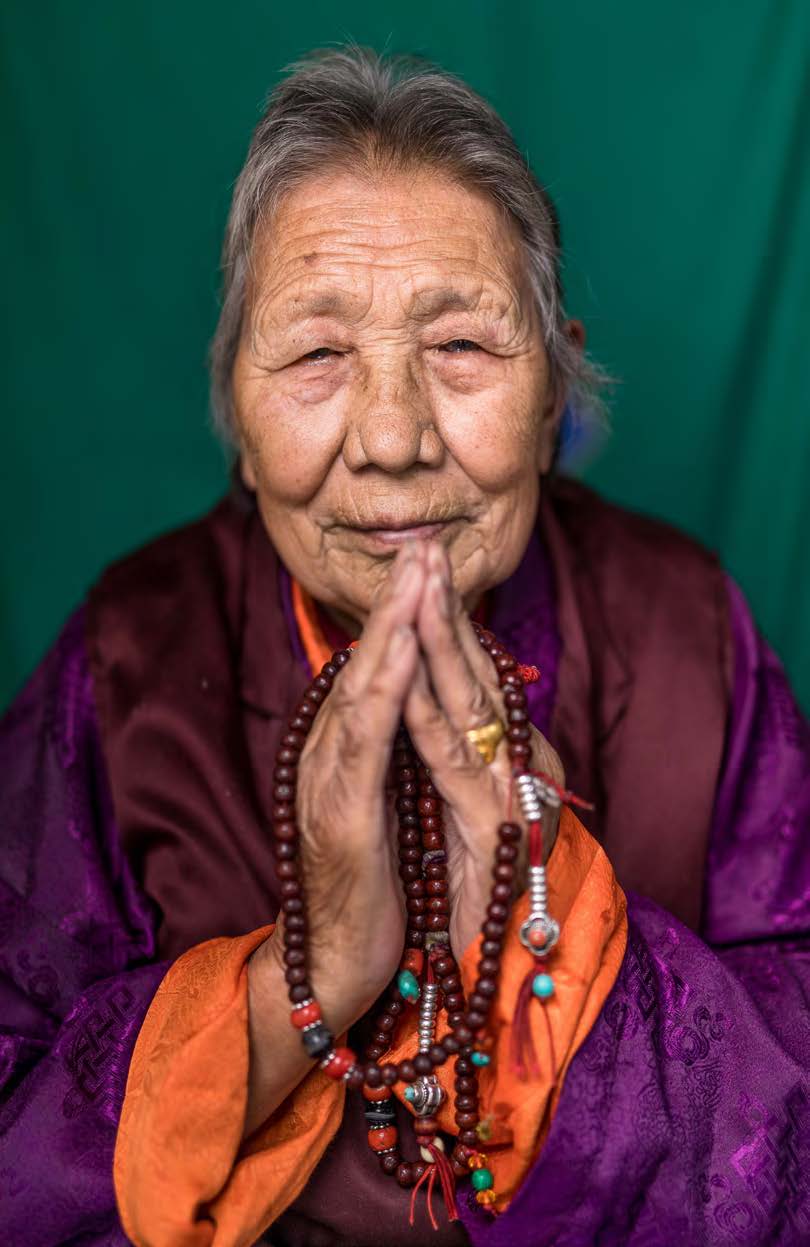
During the time she spent as a political prisoner, all of those who Ama Adhe was close to died from starvation due to the small and infrequent amounts of Maize they were given to subsist on. Upon leaving after her twenty-seven year sentence, Ama, who passed away last year after a life of being a symbol of Tibetan resistance, was shown the skeletons of Tibetans that had died during torture as a reminder of what to expect if she acted against the Chinese regime. Despite being free of chains, the feeling of imprisonment didn’t end with her sentence. When Ama returned to the home that had given her hope for so long while incarcerated, the Tibet she knew was gone.
Tibetan culture, religion, and language have been systematically wiped out inside Tibet, and with it so has the core identity of the Tibetan people. Thousands have followed their spiritual leader in fleeing Tibet, spending weeks travelling through the dark of the night over 5000m mountain passes, staring mother nature at her worst in the face and often losing the battle — all with the hope of practicing their culture in exile.
There are currently an estimated 150,000 Tibetans living in exile. Some finding refuge as far afield as North America, Australia, and Europe, however the majority of exiled Tibetans live closer to home in Nepal, Bhutan and India. Despite not having a place to truly call home for the past sixty two years, Tibetan culture is thriving against all odds.
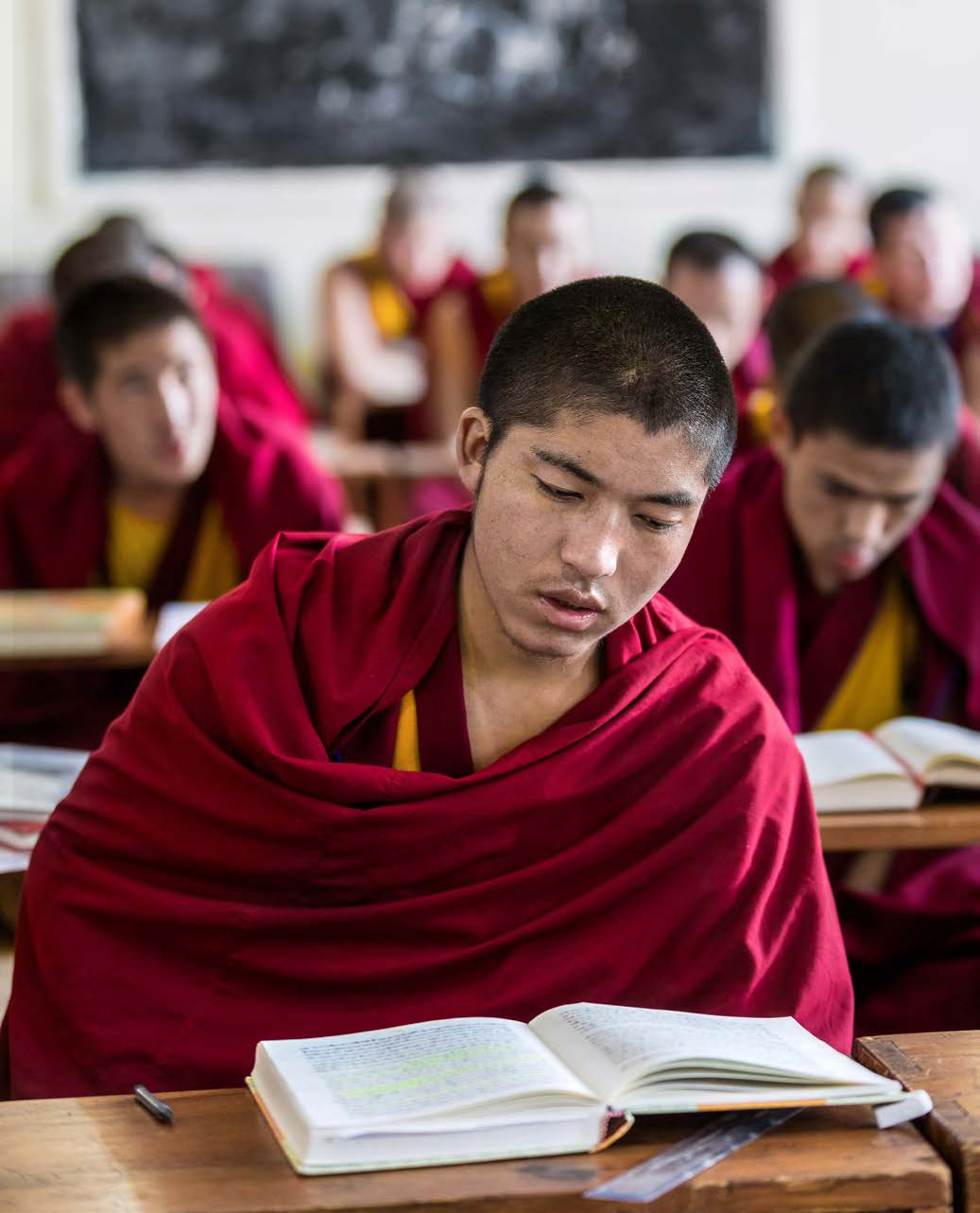
His Holiness the Dalai Lama is a symbol of resilience for his people, and is the principal proponent as to why Tibetan culture survives after over six decades in exile. Despite describing himself as ‘just the average Buddhist monk,’ he represents so much more than that for the people of Tibet. He is their spiritual leader and the living embodiment of their faith and culture. His people draw fortitude from his strength of character and his message of unity and well-being that has made the Nobel Peace Prize winner globally renowned.
The care the Dalai Lama has for his people is reflected by the measures he has taken to secure their livelihoods over time. His Holiness has devised a cultural support system out of his home away from home in Dharamsala, the town perched in the foothills of the Indian Himalayas that acts as a central hub of all things Tibetan. It was here that the Dalai Lama started the Tibetan government in exile upon his escape in 1959, bringing democracy to Tibetan life for the first time in the country’s rich history that dates back to 600 AD.
The Central Tibetan Administration, the official label of the government in exile, has numerous facets that are specifically in place to support Tibetan cultural practices. The Department of Religion and Culture was established to overlook religious and cultural affairs in the Tibetan exiled community by reviving, preserving, and promoting traditions that have been led to the verge of extinction inside Tibet.
Resilience has grown from the ground up through the department supporting various aspects of Tibetan culture: Tibetan Buddhism is supported through the preservation of 262 monasteries and nunneries; the Tibetan Institute of Performing Arts receives direct funding to protect Tibetan artistic practices; and various other institutions are propped up to keep the Tibetan flame burning. Protecting Tibetan cultural practices in a land where the customs differ is no easy feat. In that respect, regular events such as the annual Tibet Day are vital.

Started as a government initiative to revitalize Tibetan culture, Tibet Day has turned into an annual opportunity for communities to get together and enjoy all things Tibetan. From small groups in the remote nomadic areas close to the Tibetan border, to larger communities in the south of India, Tibetan refugees do what Tibetans would be doing in their own land in a world without Chinese occupation.
They dress in traditional Tibetan dress that is vibrant to the eye; they dance beautifully synchronized flowing dances; they sing songs in homage to the land they long for; they debate Buddhist philosophy and its benefits to mankind; they enjoy Tibetan dishes such as Tsampa and drink butter tea. And in doing so, they spark interest in their culture through the eyes of a younger generation that only knows of Tibet through their ancestor’s stories.
Tibet’s youth hold the key to the future of Tibet and Tibetan culture within their hands. Therefore educating these potential pioneers is key to maintaining the Tibetan way of life. For the first waves arriving from Tibet, conditions were difficult, with high rates of malnutrition and a lack of educational and working opportunities plighting the Tibetan people. The first arrivers were forced to partake in arduous manual work such as road construction for little to no money. In 1960, the Dalai Lama started the Tibetan Children’s Village (TCV) with the ambition of creating a self-sufficient community that allows Tibetan people and their culture to flourish. Initially starting with 51 children, the TCV is now a registered nonprofit that currently cares for over 12,000 children across India, and is arguably the biggest proponent that has allowed Tibetan culture to thrive in exile.
The TCV school motto “Others before self” is in sync with the Dalai Lama’s message and encompasses the Tibetan philosophy that acts as the backbone to the community. Instilling this message in the children creates an environment in which learning and the transmission of Tibetan culture is successful.
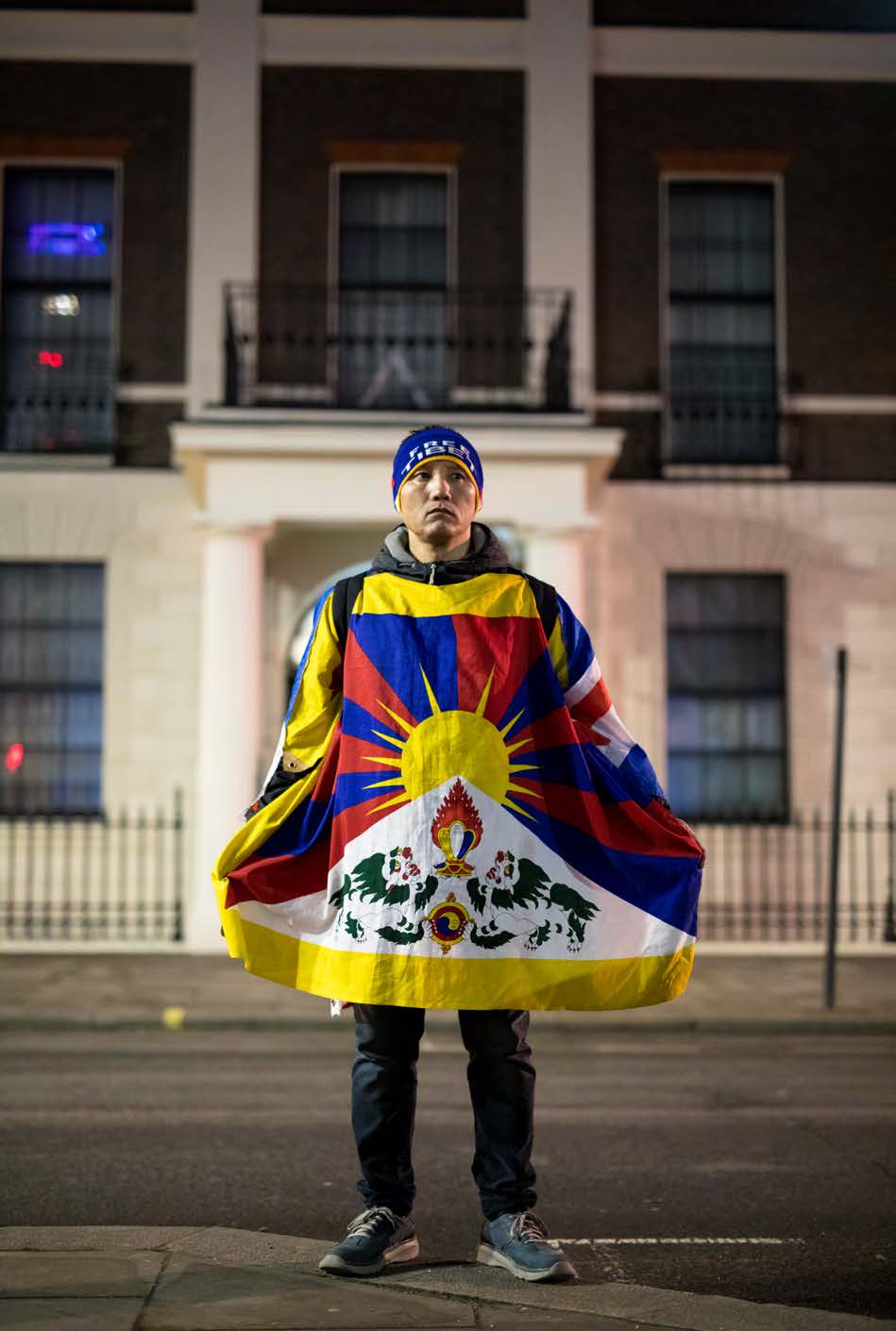
There is no culture without language, and as all classes apart from languages are taught in Tibetan, this creates a core identity that is the base for Tibetan culture to thrive. The children learn of their land, customs and traditions in specifically tailored lessons. They learn about their culture’s past in history class and absorb their culture’s philosophy in classes of Tibetan Buddhism that will guide their future. The children are fully engrossed in their Tibetan life for their first eighteen years. On Wednesdays, all children and staff wear the chupa - this traditional Tibetan dress transforms the school, creating an authentically Tibetan environment that makes it hard to remember that this is an exiled culture.
According to the Director of TCV, this focus on language and maintaining culture is key to the programme’s success: “A wholesome education, related to Tibetan culture, tradition, and language is key. The preservation of Tibetan identity lies in the roots of Tibetan language, and from that language springs culture.”
The Tibetan Children’s Village prides itself on offering the best of both Eastern and Western education as a way to develop Tibetans into contributing members of wider society. This has allowed the TCV to become fully-fledged schools affiliated to the Central Board of Education in India, which are performing amongst the best in the country.
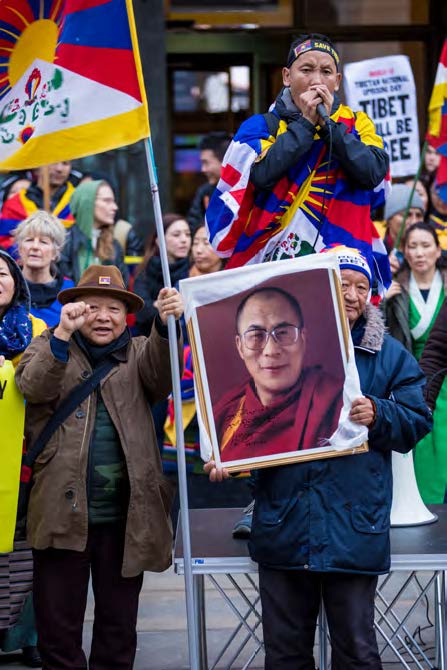
The literacy rate amongst Tibetans in exile is higher than the Indian national average, a feat unparalleled compared to other refugee communities worldwide. Further unprecedented is that 90 percent of Tibetan children attend university, an opportunity funded by the TCV that creates leaders in the Tibetan community. There is currently an active generation of doctors, lawyers and other professionals that act as fine representatives for their people and culture, not only in India but also worldwide.
The high level of education received by Tibetan refugees has given them the skills to achieve regardless of location. Many Tibetans are now making a living further from their motherland in the West. Building a cultural identity and creating the conditions to make a resilient culture has different challenges this far away from home. The communities are often smaller in size, and do not have the luxury of having education based on Tibetan values using the Tibetan language.
Regardless of location Tibetans form a tight-knit community and this sets the foundation to create a resilient environment in Western culture. For decades, communities have met on weekends where they teach Tibetan language and values to their children, providing snippets of their heritage where they can in a society that is far different from their roots. There are many Tibetan cultural centres dotted around Europe that act as the hub for communities and as a base to plan activities such as the annual protest of the Chinese occupation, Tibetan Uprising Day.
On Tibetan Uprising Day, Tibetans around the world make themselves known. Of course, still peaceful in nature, Tibetans and supporters of the cause stand strong in protest of the Chinese occupation of Tibet. This year's protests have obviously been restricted by the ongoing pandemic due to COVID-19, yet Tibetans still endeavour to create awareness for their cause.
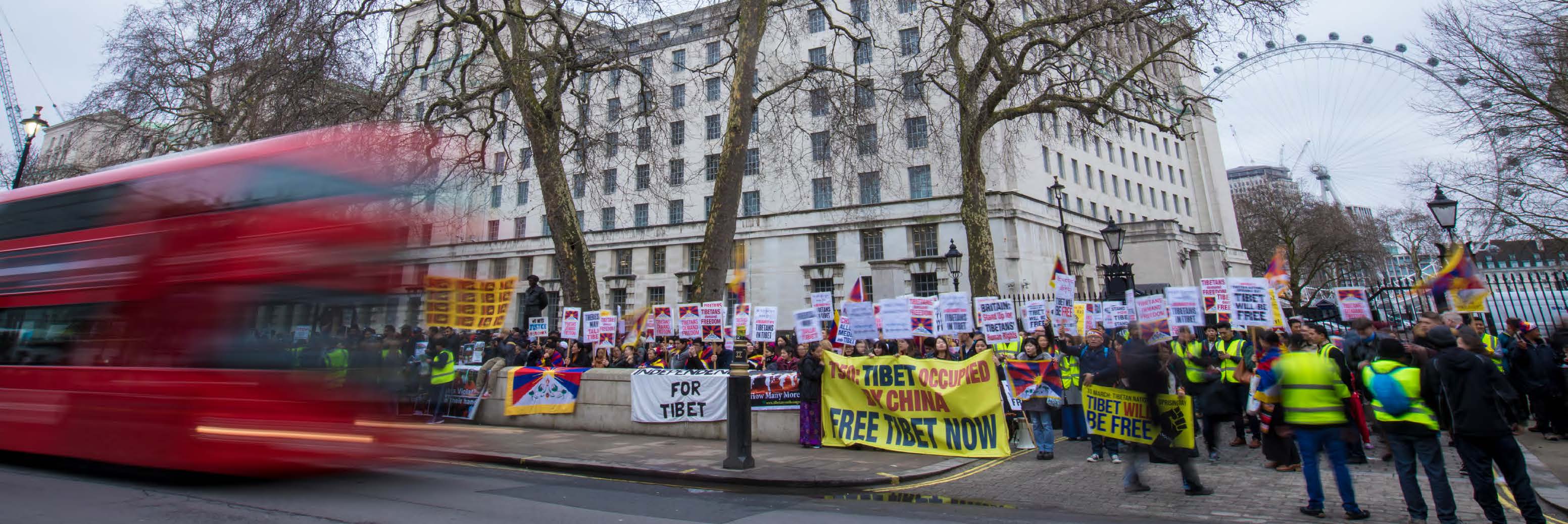
For decades, the Tibetan community has held major events in Delhi, London, Sydney, Zurich, Los Angeles and other major cities on this day. Tibetans and supporters of the cause gather in hundreds, and even thousands, to stand for what they believe in. They fly their flag high with pride; display placards with messages to China; loft photos of the Dalai Lama and the deceased; march and chant passionately about the current situation in Tibet outside the Chinese embassy, all things that their kin are being imprisoned and beaten for in their homeland.
Most importantly they are standing up for freedom. The freedom to practice a culture that is based on values of kindness, altruism, and hope. Strong leadership, strength of character, and an unwillingness to give up are what have made Tibetan culture resilient. The freedom Tibetans feel in exile needs to be replicated inside of Tibet. The stranglehold on Tibetan life needs to be released to allow Tibetan culture to thrive in Tibet, just like it is in exile.
Download the visual report.
— Christopher Purnell is a writer, researcher, and editor from the United Kingdom who specializes in anthropological writings and human interest stories. Samuel Confortola is a photographer from the United Kingdom/Italy who specializes in culture, landscapes, winter sports and lifestyle photography. Together they are working on a book project titled Tibet: A Forbidden Culture to raise awareness of the Tibetan fight for self-determination.
